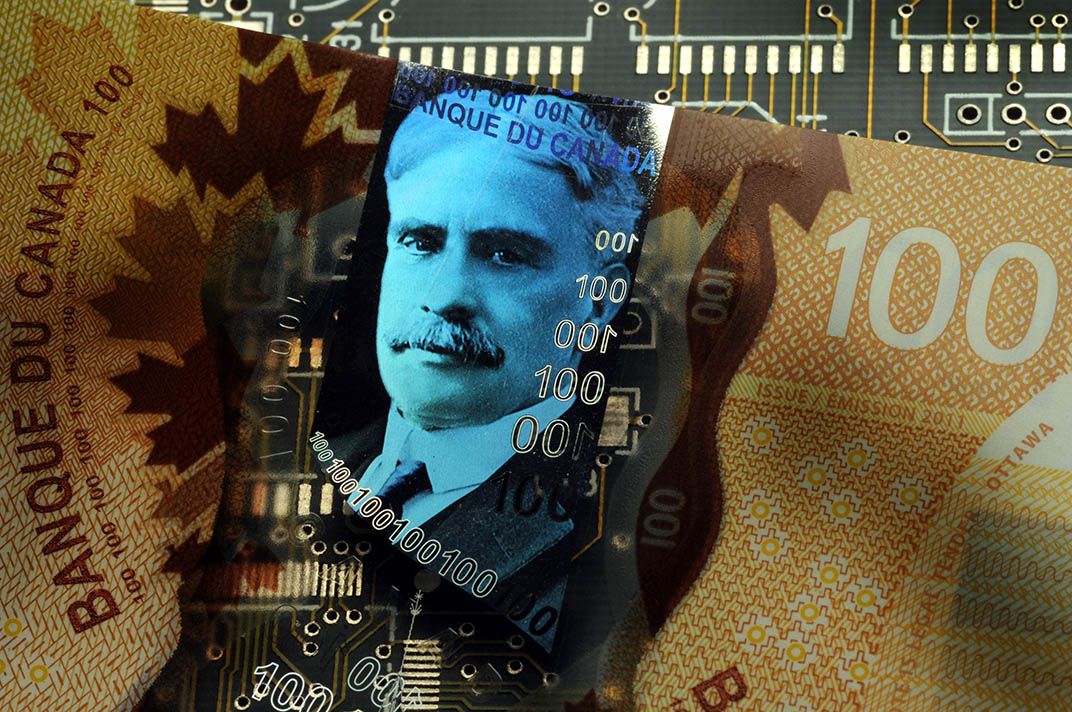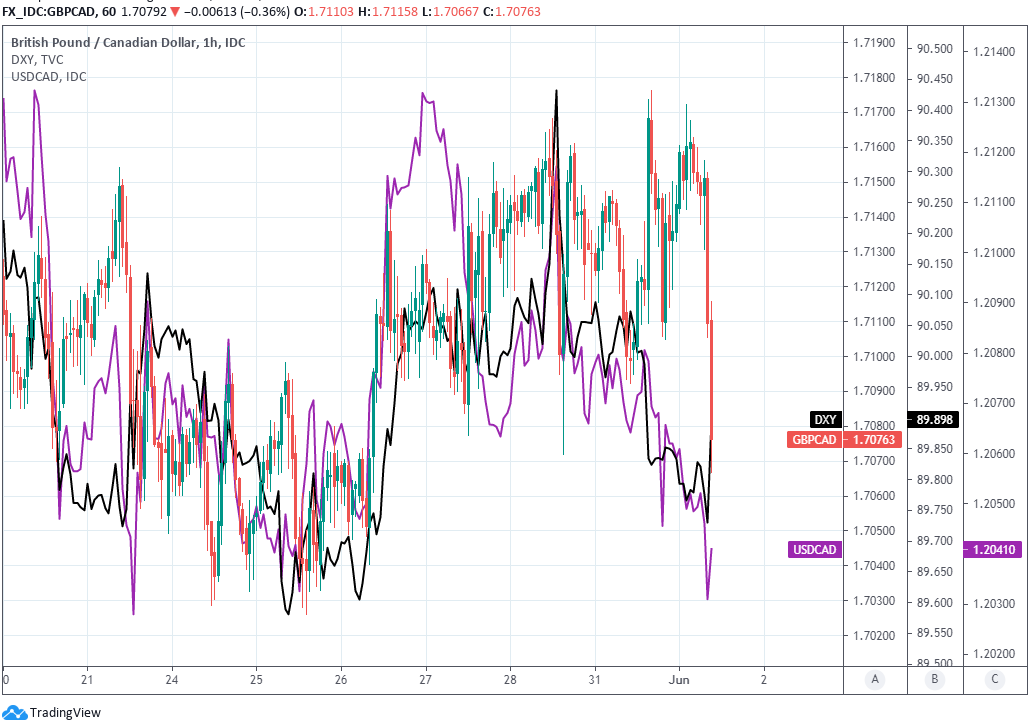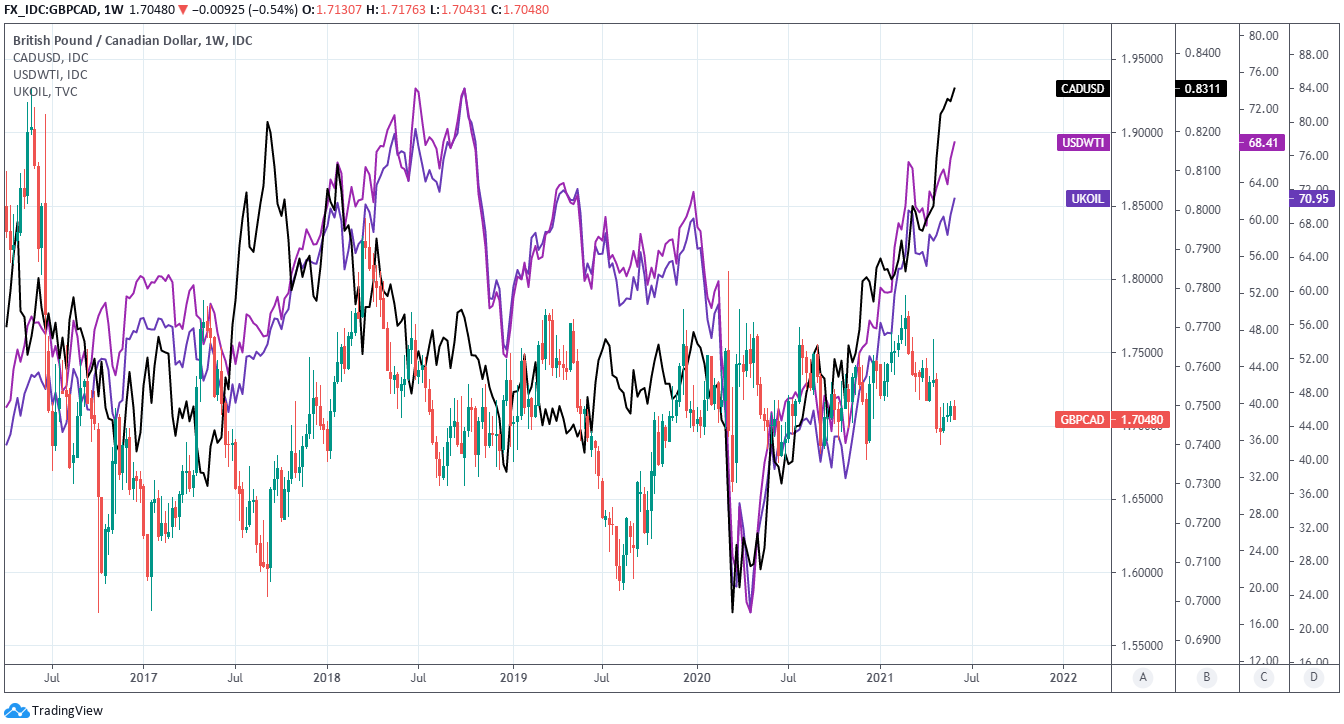Pound-Canadian Dollar Week Ahead Forecast: Volatile Range in Play with Downside Risk
- Written by: James Skinner
- GBP/CAD eyes range bottom amid oil, USD rally
- Supported at 1.70 but struggling near to 1.7150
- GDP, job data offer insight into Q2 CAD economy
- But U.S. payrolls may matter more for USD/CAD

Image © Adobe Stock
- GBP/CAD reference rates at publication:
- Spot: 1.7052
- Bank transfer rates (indicative guide): 1.6457-1.6576
- Money transfer specialist rates (indicative): 1.6668-1.6930
- More information on securing specialist rates, here
- Set up an exchange rate alert, here
The Pound-to-Canadian Dollar exchange rate tumbled at the opening of a holiday-shortened week and was slipping into the lower half of a month-long range where directional risk could turn higher over the coming days as the Loonie navigates GDP and job data.
Sterling saw one of its larger declines against the Loonie when underperforming all other major currencies on Tuesday with price action coming alongside more-than 2% rallies in some oil benchmarks and widespread increases in stock prices.
Tuesday’s moves in oil took the 2021 return for ICE Brent crude futures to 36.6% and to 40.54% for ICE’s West Texas Intermediate futures, with these price moves coming alongside increases for agricultural commodities as well as most materials trading on the London Metal Exchange.
Oil and equity market gains are supportive of the Canadian Loonie and a downside risk to GBP/CAD, which was back beneath the 1.71 handle as the main Sterling exchange rate GBP/USD slipped from recent highs near 1.4240, while its Canadian counterpart USD/CAD continued in a southbound direction, denoting strength in the Loonie.
“CAD is the best performing currency thus far in 2021. We view the recovery in crude (and particularly the dramatic recovery in WCS-grade crude past $50/bbl) as the primary factor. Assuming it sticks, Canada will likely run a current account surplus in 2021, which hasn’t happened since 2008 (when USDCAD was below parity),” says Greg Anderson, global head of FX strategy at BMO Capital Markets.
Above: Pound-to-Canadian Dollar rate at daily intervals with USD/CAD and U.S. Dollar Index.
Secure a retail exchange rate that is between 3-5% stronger than offered by leading banks, learn more.
Despite falling on Tuesday, GBP/CAD has been edging higher in an ascending range since the early weeks of May and before the point when USD/CAD reached six-year lows dating back to May 2015; with a bid emerging around the 1.70 level while 1.7175 has been providing tough resistance barrier thus far.
“Trend signals are flat across short, medium and long-term timeframes, however, suggesting more range trading is likely in the near term,” says Juan Manuel Herrera, a strategist at Scotiabank.
“A breakout of the underlying bear channel (ceiling at 1.7368 currently) is needed to boost the chances of the GBP rally regaining momentum. Support remains 1.70,” Herrera adds.
{wbamp-hide start} {wbamp-hide end}{wbamp-show start}{wbamp-show end}
The author couldn’t find any analysts who thought this range might break in either direction during the week ahead, although where within that range GBP/CAD ends the period may depend more on the outcomes of Canadian economic data due over the coming days.
Here Tuesday’s March GDP release will be scrutinised at 13:30 before Canada releases May employment data alongside the U.S. non-farm payrolls report at 13:30; all of which could have an impact on the USD/CAD rate with any disappointments possibly fuelling a correction higher.
“The story won’t be the strong Q1 GDP results, which are pretty much a lock at this point, but the softer news about the subsequent quarter. Keep an eye, therefore, on the flash estimate for April GDP, which is likely to show a decline, and what could be a moderate drop in employment in May after a huge retreat in April,” says Avery Shenfeld, chief economist at CIBC Capital Markets.
Above: Pound-to-Canadian Dollar rate at weekly intervals with USD/CAD and U.S. Dollar Index.
Consensus looks for a 23.5k decline in Canadian employment in May to have lifted the jobless rate from 8.1% to 8.2% as much of the country wallowed under coronavirus-related restrictions, while the Canadian Dollar may be sensitive to any up or downward surprises.
With central banks generally seeking a return toward full employment before lifting interest rates at the other end of the crisis, early data like that for May will provide insight into the size of the hole in the labour market ground and the extent of the challenge ahead for monetary policy.
Employment incomes and expenditures are the foundations of GDP, otherwise known as economies, and so are crucial to reducing “slack” in economies which is widely thought to have a direct impact on the level and momentum of inflation within an economy.
In turn it’s ultimately inflation which central banks are seeking to manage when they make decisions around interest rates and other monetary policy tools like quantitative easing.
"As slack is absorbed, inflation should return to 2 per cent on a sustained basis some time in the second half of 2022," the BoC said in April, which was as explicit a hint as one might ever see that the BoC would be willing to lift interest rates as soon as next year.






